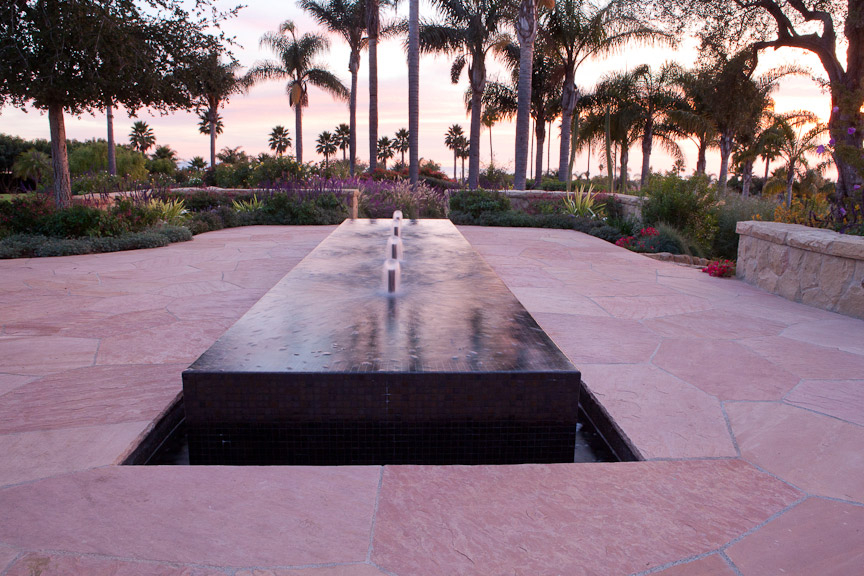Incorporating Water Features in Your Landscape Design
Are you looking to add a touch of tranquility to your outdoor space? Incorporating water features in your landscape design can be the perfect solution.
Imagine relaxing in your backyard, listening to the soothing sound of a cascading waterfall or watching colorful koi fish swim gracefully in a pond. These water features not only add visual appeal but also create a serene atmosphere for you to enjoy.
Whether you have a small patio or a sprawling garden, there are various options to choose from, such as fountains, ponds, or even a simple birdbath.
In this guide, we will explore the benefits of water features, how to select the right location, design ideas, and maintenance tips to help you create a beautiful oasis in your own backyard.
Benefits of Water Features
One of the top benefits of including water features in your landscape design is that they can create a tranquil and relaxing atmosphere. The sound of flowing water can have a calming effect on your mind and body, helping to reduce stress and promote a sense of peace. Whether it’s a small fountain or a larger pond, the gentle sound of water can drown out the noise of the outside world and create a peaceful oasis in your own backyard.
In addition to creating a serene environment, water features can also enhance the overall aesthetic appeal of your landscape. The sight of water can add a touch of elegance and sophistication to any outdoor space. Whether it’s a cascading waterfall, a babbling brook, or a still reflecting pool, water features can add a dynamic element to your landscape design that’s both visually stunning and captivating.
Water features also have the ability to attract wildlife to your garden. Birds, butterflies, and other creatures are naturally drawn to water sources, and by incorporating a water feature into your landscape, you can create a haven for these beautiful creatures. Watching birds splash and drink from your fountain or pond can bring a sense of joy and wonder to your outdoor space.
Types of Water Features
Now let’s talk about the different types of water features you can incorporate into your landscape design.
When it comes to fountains versus ponds, you’ll need to consider the size and placement that works best for your space.
Additionally, it’s important to think about the maintenance and upkeep required for each type of water feature.
Fountains Vs. Ponds
To choose between fountains and ponds as water features for your landscape design, consider the specific needs and preferences of your outdoor space.
Fountains, with their flowing water and soothing sounds, can add a touch of elegance and tranquility to any garden. They’re ideal for smaller spaces or areas where you want to create a focal point. Fountains come in a variety of sizes, styles, and materials, allowing you to choose one that complements your overall design.
On the other hand, ponds offer a more natural and serene environment. They can support a diverse range of plants and aquatic life, creating a mini ecosystem in your backyard. Ponds are perfect for larger areas and can be customized with waterfalls, rocks, and even fish.
Ultimately, the decision between fountains and ponds depends on your personal taste and the ambiance you want to create in your outdoor space.
Size and Placement
Considering the size and placement of water features is crucial when incorporating them into your landscape design. The right size and placement can enhance the overall aesthetic appeal of your outdoor space. Here are some factors to consider:
– Available space: Determine the size of your water feature based on the available space in your yard. A large pond may not be suitable for a small backyard, while a small fountain might get lost in a large open area.
– Visibility: Think about where you want your water feature to be seen from. Placing it near a patio or seating area can create a relaxing ambiance for you and your guests.
– Sunlight exposure: Consider the amount of sunlight the area receives throughout the day. Some water plants and fish require specific levels of sunlight to thrive.

– Safety: Ensure that the water feature is placed in a safe location, away from children’s play areas or high foot traffic.
Maintenance and Upkeep
To maintain and keep your water features in good condition, you should regularly clean and inspect them. Different types of water features require different maintenance routines.
For ponds and waterfalls, you need to clean out debris, such as leaves and twigs, on a regular basis. This will prevent clogging and maintain the water’s clarity. Additionally, you should check the pumps and filters to ensure they’re functioning properly.
Fountains and birdbaths also require regular cleaning to remove algae and mineral deposits. Scrubbing the surfaces with a non-toxic cleaner and rinsing with clean water will help keep them looking their best.
It’s important to note that during winter months, you may need to take extra precautions to prevent freezing, such as draining the water or using a heater.
Choosing the Right Location
When selecting the ideal location for your water feature, keep in mind its size, visibility, and proximity to other elements in your landscape design. Consider the following factors to ensure you make the right choice:
– Sunlight: Determine how much sunlight the area receives throughout the day. Some water plants require full sunlight, while others thrive in shade. Find a spot that suits the specific needs of your water feature and any accompanying vegetation.
– Safety: Ensure that the location you choose is safe for both children and pets. Avoid placing the water feature near steep slopes or areas with uneven terrain. Consider installing safety barriers or covers if necessary.
– Aesthetics: Think about how the water feature will fit into the overall design of your landscape. Choose a location that enhances the visual appeal of your outdoor space. Consider how the water feature will interact with other elements, such as plants, pathways, or seating areas.
– Accessibility: Make sure the water feature is easily accessible for maintenance and enjoyment. Consider the proximity to a water source for refilling or cleaning purposes. Additionally, think about how the location will affect the sound and visibility of the water feature from different areas of your property.
Designing With Water Features
To create a visually stunning and soothing outdoor oasis, incorporate water features into your landscape design. Designing with water features can enhance the overall aesthetic appeal of your outdoor space and create a tranquil atmosphere. There are various types of water features to choose from, including fountains, ponds, and waterfalls, each offering its own unique charm.
When designing with water features, consider the size and scale of your outdoor space. A small garden might benefit from a small fountain or a tabletop water feature, while a larger yard can accommodate a larger pond or waterfall. Additionally, consider the style of your landscape design and choose a water feature that complements it. For a modern and minimalist design, a sleek and simple fountain would be a perfect fit, while a more naturalistic design could be enhanced by the addition of a pond or stream.
Placement is another important factor to consider when designing with water features. Ideally, the water feature should be visible from multiple vantage points, such as the patio or seating area, to maximize its impact. Consider placing the water feature near existing plants or structures to create a harmonious and cohesive design.
Incorporating water features into your landscape design can transform your outdoor space into a peaceful retreat. Whether you choose a small fountain or a grand waterfall, the soothing sound and visual beauty of water will add a sense of tranquility and relaxation to your outdoor oasis.
Maintenance and Care Tips
Taking care of your water features is essential for maintaining their beauty and functionality. Here are some maintenance and care tips to keep in mind:
– Regular cleaning: It’s important to clean your water feature regularly to prevent the build-up of algae and debris. Use a net or skimmer to remove leaves and other debris from the surface of the water. Consider using a pond vacuum to clean the bottom of your water feature.
– Proper water circulation: Ensure that your water feature has proper water circulation to prevent stagnant water. Stagnant water can become a breeding ground for mosquitoes and other pests. Consider installing a pump or fountain to keep the water moving.
– Water quality management: Test the water regularly to ensure it has the right balance of chemicals and nutrients. Maintain the pH levels and use appropriate water treatments to prevent the growth of algae and harmful bacteria.
– Winterizing your water feature: In colder climates, it’s important to winterize your water feature to prevent damage from freezing temperatures. Remove any remaining water from the feature and consider installing a heater or de-icer to keep the water from freezing.
Inspiration for Water Feature Designs
Looking for some inspiration for your water feature designs?
Get ready to explore some creative ideas that will transform your landscape into a tranquil oasis.
Discover the benefits that water features can bring to your outdoor space, from creating a soothing atmosphere to attracting wildlife.
Let’s dive in and explore the endless possibilities for incorporating water features into your landscape design.
Creative Water Feature Ideas
When designing your landscape, consider incorporating water features with the use of a variety of materials and styles. Water features can add a sense of tranquility and beauty to any outdoor space. Here are some creative water feature ideas to inspire your design:
– Natural stone waterfall: Create a stunning focal point by building a waterfall using natural stone. The cascading water will provide a soothing sound and a visually pleasing element to your landscape.
– Floating fountain: Add a touch of elegance with a floating fountain. These can be placed in a pond or pool, and the water shoots up in a graceful spray, creating a mesmerizing effect.
– Rain curtain: Install a rain curtain feature, where water flows down from a wall or structure in a thin sheet. This unique water feature creates a sense of drama and can be a beautiful backdrop for outdoor gatherings.
– Bubbling rock: Incorporate a bubbling rock into your design for a simple yet charming water feature. Water gently bubbles up from the top of the rock, creating a soothing and natural ambiance.
Get creative with your water feature designs and let your imagination flow!
Benefits of Water Features
Water features offer a multitude of benefits that can inspire your water feature designs. Not only do they create a sense of tranquility and serenity in your outdoor space, but they also provide a visual focal point that can enhance the overall aesthetics of your landscape.
The sound of flowing water can have a calming effect on your mind, reducing stress and promoting relaxation. Water features also attract wildlife, such as birds and butterflies, adding an element of nature to your surroundings. Additionally, they can help to mask unwanted noises from traffic or neighbors, creating a peaceful and soothing environment.
Whether it’s a small fountain, a pond, or a waterfall, incorporating a water feature into your landscape design can bring numerous benefits and inspire your creativity in designing the perfect outdoor oasis.
Frequently Asked Questions
What Are the Different Types of Water Pumps Used in Water Features?
There are different types of water pumps used in water features. You can use submersible pumps, external pumps, or recirculating pumps, depending on the size and type of your water feature.
How Can Water Features Be Incorporated in Small Spaces or Urban Environments?
You can incorporate water features in small spaces or urban environments by using compact designs, such as wall fountains or tabletop waterfalls. These features add a soothing ambiance and can be customized to fit your unique space.
Are There Any Safety Measures That Need to Be Taken When Installing a Water Feature?
When installing a water feature, it’s important to take safety measures. Ensure that the area is properly secured to prevent accidents. Use childproof fencing if needed and regularly check for any potential hazards.
Can Water Features Attract Wildlife to My Garden?
Water features can definitely attract wildlife to your garden. The sound and sight of water can be irresistible to birds and other animals, making your landscape a haven for them to visit.
What Are Some Creative Ways to Incorporate Lighting Into Water Features?
To incorporate lighting into water features, you can try placing underwater lights to illuminate the water from below, or install floating lights on the surface. These creative options will enhance the beauty of your landscape design.
Conclusion
Incorporating water features in your landscape design can bring numerous benefits, such as creating a soothing ambiance and attracting wildlife. By considering the different types of water features and choosing the right location, you can enhance the overall aesthetic of your outdoor space.
Remember to design with water features in mind and follow proper maintenance and care ti More Bonuses ps to ensure their longevity. Let your creativity flow and get inspired to create stunning water feature designs that will elevate your landscape.

Welcome to my website! My name is Ashton Dechaineux, and I am thrilled to share my passion for outdoor lighting solutions, high-end garden accessories, outdoor entertaining tips, and landscape design ideas with you.

